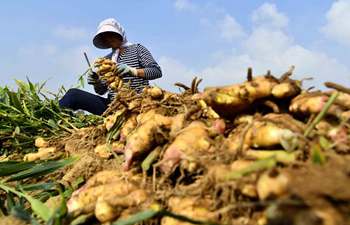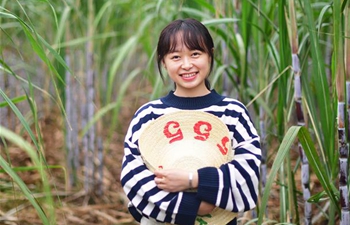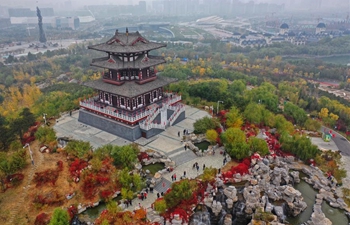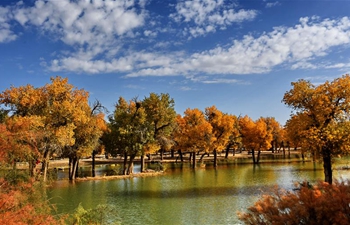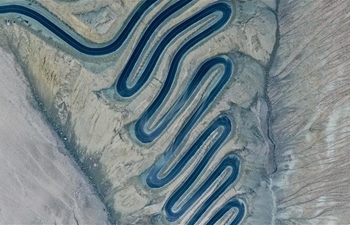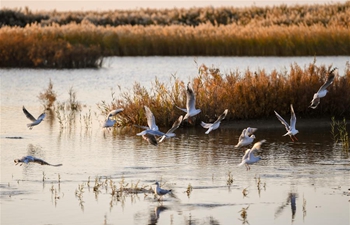
Experts examine rice paddies in Bayiawati Township, Yopurga County under Kashgar, northwest China's Xinjiang Uygur Autonomous Region, Oct. 24, 2019. A public yield monitoring was conducted Thursday in the saline soil rice paddies on the western margin of the Taklimakan Desert in Xinjiang Uygur Autonomous Region. The saline soil rice, developed by the R&D team of Yuan Longping, the pioneer of hybrid rice, achieved a theoretical yield of 546.74 kg per mu (about 0.07 hectares), based on a random drawing of a paddy. (Xinhua/Ding Lei)
URUMQI, Oct. 25 (Xinhua) -- A public yield monitoring was conducted Thursday in the saline soil rice paddies on the western margin of the Taklimakan Desert in Xinjiang Uygur Autonomous Region.
The saline soil rice, developed by the R&D team of Yuan Longping, the pioneer of hybrid rice, achieved a theoretical yield of 546.74 kg per mu (about 0.07 hectares), based on a random drawing of a paddy.
The test field, in the township of Bayiawati, Yopurga County under Kashgar, was 20 hectares in size. The salinity of the soil was as high as around 1.7 percent, with a pH value of over eight, indicating a high degree of salinity.
Surrounding the Taklimakan, China's largest desert, are large areas of saline land that were long deemed unsuitable for agricultural production. However, the experts say the saline soil rice can improve soil and lower salinity, turning saline soil into fertile farmland.
The saline soil R&D center, based in east China's Qingdao, began field testing in Xinjiang, Heilongjiang, Shandong, Zhejiang and Shaanxi in May 2018, in a bid to screen the best variety for countrywide promotion.





